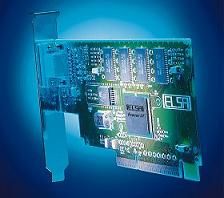Riva128ZX
Processors became more powerful, monitor diagonals - more, games - more demanding. And buyers completely began to forget about everything in the world, except for Voodoo. It was early 1998 when nVidia announced a new chip, the Riva 128ZX.

The Riva 128ZX was an improved model of the Riva 128. What were the differences? The maximum amount of memory has been increased to 8 MB. This made it possible to run 3D games at resolutions up to 1280x1024.
AGP2x support included.
Due to the new 250 MHz RAMDAC, 2D quality has been increased. Now, having a large monitor, one could fearlessly set resolutions up to 1600x1200 at 85 Hz.
A TV flicker filter is included, which allows you to improve the quality of the video being played through the TV-out. Now it was possible to forget about flickering.
According to nVidia, thanks to the new drivers, the rendering quality has slightly improved, but it is still far from the "high levels" of Voodoo2, Verite 2x00, i740.
As we can see, the new name hides the same technology as in Riva 128. No improvements have been made in terms of rendering quality, speed, new 3D effects and functions.
| Name | Riva 128 ZX |
| Core | NV3 |
| Process technology (µm) | 0.35 |
| Transistors (million) | 3.5 |
| Core frequency | 100 |
| Memory frequency (DDR) | 100 |
| Bus and memory type | SDR-128bit |
| Bandwidth (Gb/s) | 1.6 |
| Pixel pipelines | 1 |
| TMU per conveyor | 1 |
| textures per clock | 1 |
| textures per pass | 1 |
| Vertex conveyors | No |
| Pixel Shaders | No |
| Vertex Shaders | No |
| Fill Rate (Mpix/s) | 100 |
| Fill Rate (Mtex/s) | 100 |
| DirectX | 5.0 |
| Anti-Aliasing (Max) | No (?) |
| Anisotropic Filtering (Max) | No (?) |
| Memory | 8MB |
| Interface | AGP2x/PCI |
| RAMDAC | 250MHz |
Riva 128ZX was released to a storm of applause and new drivers. The new drivers greatly simplified the life of ordinary users, relieving them of big problems with installing cards. The problems got smaller. In addition, the new drivers were "sharpened" for 3D Winbench 98, where they showed amazing results - 781 against 691 for the I740. According to these tests, Riva 128ZX outperforms almost all competitors. But these are just tests. Among other things, nVidia concealed what hardware the tests were run on.
Due to the increase in the amount of memory, the performance of video cards on Riva 128ZX grew. But the top speed remained the same. After all, the chip frequency was still 100MHz, which means that the maximum fill rate was 100 MPixels/sec.
Now video cards based on Riva 128ZX could satisfy everyone. Support for high resolutions in 2D and 3D, support for two types of video memory, two interfaces, TV functions, main 3D standards. With the new drivers on Riva 128ZX it was possible to run all Direct3D and OpenGL games. Riva 128ZX undoubtedly won in terms of price/quality ratio. The second generation of 3D accelerators had many advantages and disadvantages. But no matter how great the performance of the second generation video cards was, the old chips had to be replaced by new ones.



